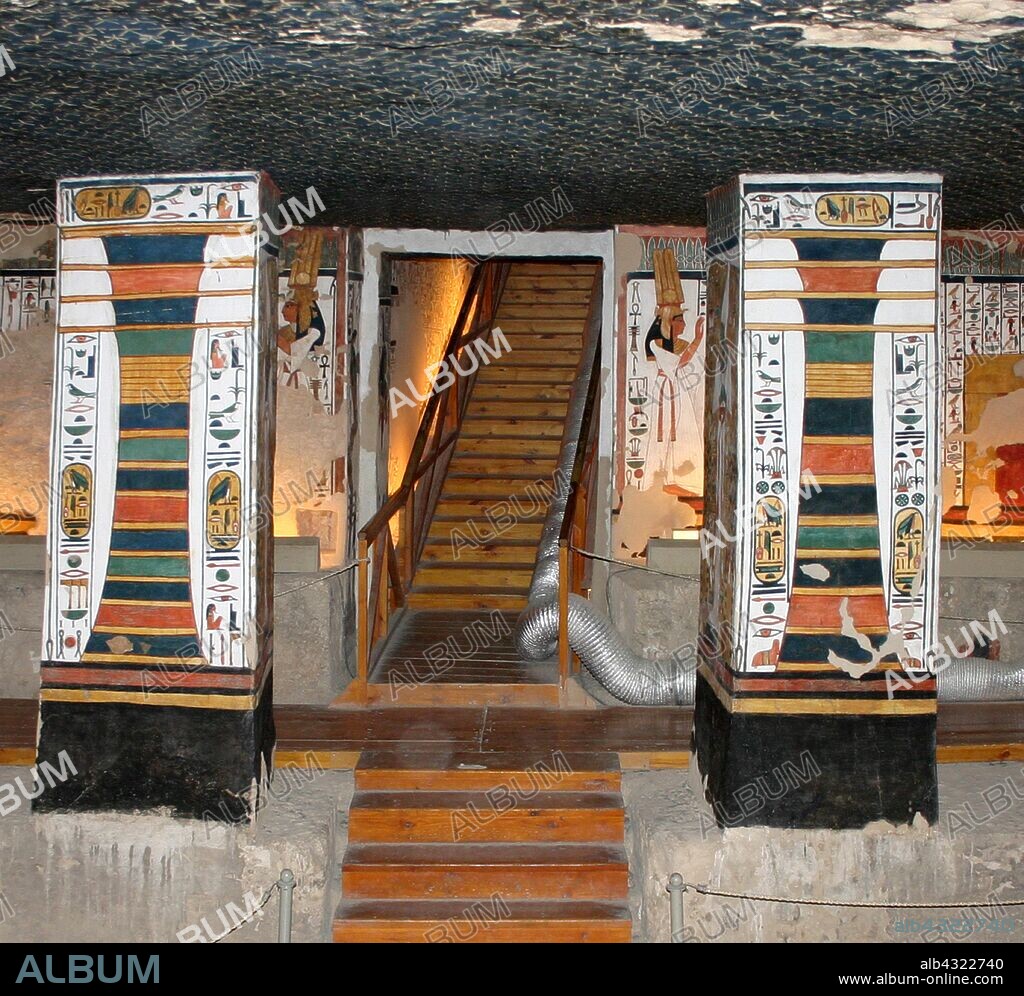alb4322740
The Djed pillar a symbol in Ancient Egypt, representing stability.

|
Añadir a otro lightbox |
|
Añadir a otro lightbox |



¿Ya tienes cuenta? Iniciar sesión
¿No tienes cuenta? Regístrate
Compra esta imagen

Título:
The Djed pillar a symbol in Ancient Egypt, representing stability.
Descripción:
Ver traducción automática
The Djed pillar a symbol in Ancient Egypt, representing stability. It is associated with the creator god Ptah and Osiris. Wall painting in the Egyptian god of the afterlife, the underworld, and the dead Wall Painting Inside the tomb (QV66) of Nefertari, in Egypt's Valley of the Queens. It was discovered by Ernesto Schiaparelli in 1904. It is called the Sistine Chapel of Ancient Egypt. In the Valley of the Queens, Nefertari's tomb once held the mummified body and representative symbolisms of her, like what most Egyptian tombs consisted of. Now, everything had been looted except for two thirds of the 5,200 square feet of wall paintings. ca. 1255 BC.
Crédito:
Album / Universal Images Group / Universal History Archive
Autorizaciones:
Modelo: No - Propiedad: No
¿Preguntas relacionadas con los derechos?
¿Preguntas relacionadas con los derechos?
Tamaño imagen:
4772 x 4395 px | 60.0 MB
Tamaño impresión:
40.4 x 37.2 cm | 15.9 x 14.6 in (300 dpi)
Palabras clave:
 Pinterest
Pinterest Twitter
Twitter Facebook
Facebook Copiar enlace
Copiar enlace Email
Email
